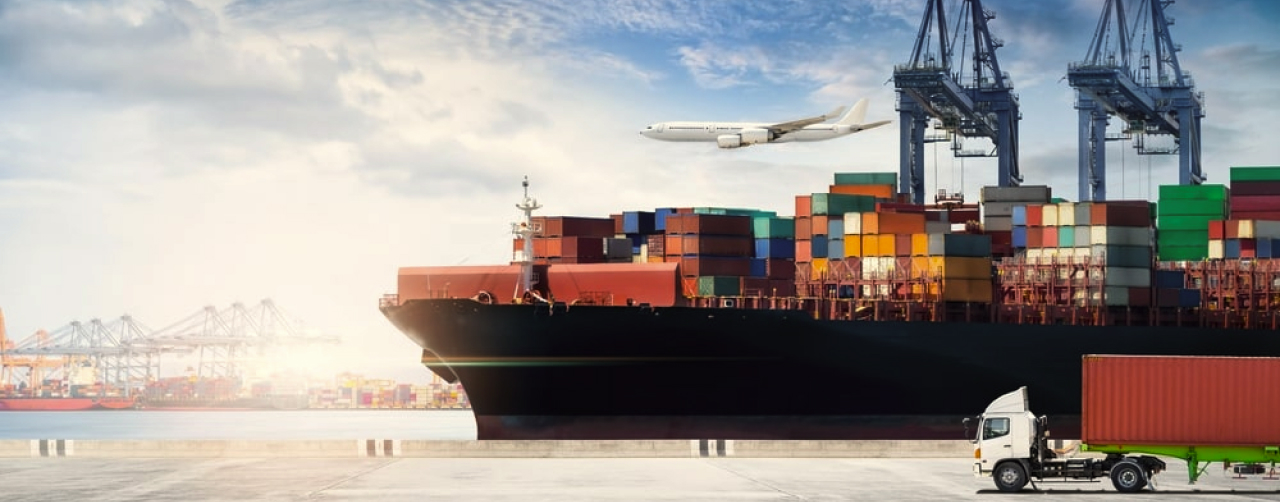
The Global Significance of China as a Manufacturing Hub
July 5, 2024
Understand China’s Trade Flow: Yearly Trends, Market Growth, and Key Insights
August 14, 2024A Comprehensive Guide to Incoterms: Simplifying International Trade for Your Business
Navigating the complexities of international trade can be daunting, especially when it comes to understanding Incoterms (International Commercial Terms). These standardized rules define the responsibilities of buyers and sellers in global transactions, covering everything from shipping and insurance to customs duties. In this blog, we'll break down each of the 11 Incoterms, providing creative examples to illustrate how they work in real-world scenarios.
1. EXW (Ex Works)
Explanation: Under EXW, the seller makes the goods available at their premises or another named place, like a factory or warehouse. The buyer assumes all costs and risks involved in transporting the goods to their final destination.
Example: Imagine you’re sourcing premium kitchenware from a manufacturer in China. With EXW, you’re responsible for arranging transportation from the factory to your warehouse, including all export and import duties. The seller simply makes the products available for pickup at their factory.
To understand about process of export customs clearance in China please visit :
2. FCA (Free Carrier)
Explanation: The seller delivers the goods to a carrier or another nominated person at a specified place. The risk transfers from the seller to the buyer when the goods are handed over to the carrier.
Example: Suppose you’re importing baby products. The supplier arranges to deliver the goods to a freight forwarder you’ve nominated at a nearby port. Once the goods are handed over, you’re responsible for shipping them to your country.
3. CPT (Carriage Paid To)
Explanation: The seller pays for the carriage of the goods to the named destination. The risk, however, transfers to the buyer as soon as the goods are handed over to the first carrier.
Example: When ordering home textiles, the seller covers the cost of transportation to your country’s port. However, as soon as the goods are loaded onto the first truck or ship, the risk shifts to you.

4. CIP (Carriage and Insurance Paid To)
Explanation: Similar to CPT, but with CIP, the seller also provides insurance for the goods during transit. The insurance must cover the buyer’s risk for at least 110% of the contract price.
Example: If you’re sourcing customized packaging, the seller not only arranges shipping but also ensures the goods during transit. Should anything happen during the journey, you’re protected by the seller’s insurance.
5. DPU (Delivered at Place Unloaded)
Explanation: The seller delivers and unloads the goods at the named place. All risks up to the point of unloading are the seller’s responsibility.
Example: Imagine receiving a shipment of cosmetics. The seller takes care of everything, including unloading the goods at your warehouse. You only need to handle the import duties and any further distribution.
6. DAP (Delivered at Place)
Explanation: The seller delivers the goods to the named destination, ready for unloading. The risk transfers from the seller to the buyer when the goods are available for unloading.
Example: If you’re importing home décor items, the seller will deliver the goods to your store. However, you’re responsible for unloading them from the truck and handling any import duties.
7. DDP (Delivered Duty Paid)
Explanation: The seller is responsible for delivering the goods to the buyer’s location, covering all costs, including import duties and taxes. The buyer only needs to receive the goods.
Example: When importing toys, the seller handles everything from shipping to paying all duties and taxes. The goods arrive at your warehouse, ready for sale, with no extra costs on your end.
8. FAS (Free Alongside Ship)
Explanation: The seller delivers the goods alongside the vessel at the port of shipment. The buyer then takes over all costs and risks from that point.
Example: Picture sourcing a bulk order of drinkware. The seller delivers the goods to the dock next to the ship. From there, you’re responsible for loading them onto the ship and covering the ocean freight and insurance.
9. FOB (Free On Board)
Explanation: The seller is responsible for loading the goods onto the vessel at the port of shipment. The risk transfers to the buyer once the goods are on board.

Example: If you’re importing kitchen appliances, the seller loads the goods onto the ship, and you handle everything from there, including freight, insurance, and customs clearance at the destination port.
10. CFR (Cost and Freight)
Explanation: The seller pays for the cost of transporting the goods to the named port of destination. However, the risk transfers to the buyer once the goods are loaded onto the vessel.
Example: Suppose you’re sourcing sanitary products. The seller arranges and pays for transportation to your country’s port, but the risk is yours as soon as the goods are loaded onto the ship.
11. CIF (Cost, Insurance, and Freight)
Explanation: Similar to CFR, but with CIF, the seller also provides insurance for the goods during the voyage. The insurance must cover the buyer’s risk for at least 110% of the contract price.
Example: For a shipment of high-value baby products, the seller arranges transportation and provides insurance coverage until the goods reach your port. Once the goods arrive, you handle the rest, knowing they were insured throughout the journey.
Understanding Incoterms is essential for any business engaged in international trade. By clearly defining the responsibilities and risks for both buyers and sellers, Incoterms help prevent misunderstandings and ensure smoother transactions. Whether you're sourcing products like kitchenware, baby items, or home textiles, knowing which Incoterm to use can significantly impact your costs and logistics.
At NexoFetch we specialize in helping businesses navigate the complexities of global trade. Our expertise in sourcing and supply chain management ensures that your products reach you efficiently and cost-effectively, no matter where in the world you're located.
For personalized assistance or to learn more about how we can support your sourcing needs, feel free to get in touch with us!






